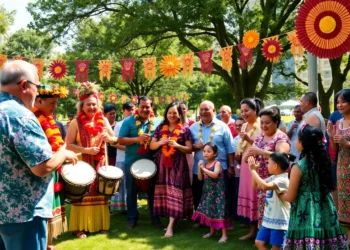Ever heard of Sannyuw? No, it’s not the latest dance craze or a trendy new snack. This fascinating concept weaves its way through various cultures, fuelled by its rich history and profound significance. Whether you’re a curious case of cultural explorer or just here for some knowledgeable insights, buckle up. This exploration of Sannyuw promises a blend of cultural curiosity, humor, and a sprinkle of wisdom. Let’s dive deep into this intriguing phenomenon that continues to shape our world in unexpected ways.
Sannyuw

Sannyuw refers to a unique cultural practice rooted in various traditions across the globe. While it may evoke different meanings depending on the region, at its core, Sannyuw embodies a philosophy of inner and communal harmony. The term itself likely originates from ancient languages, where it signifies transformation and balance.
Historically, Sannyuw emerged as a concept aimed at fostering connections between individuals and their communities. In many cultures, it symbolizes a journey towards self-discovery, often associated with rituals and rites of passage. It’s not just a word: it embodies a way of life, urging individuals to seek a deeper understanding of themselves and their role within the larger tapestry of society.
Historical Context of Sannyuw
Tracing the roots of Sannyuw reveals its evolution over centuries. Ancient texts hint at its importance during significant societal shifts, serving as a guiding principle when traditional norms faced disruptions.
In early civilizations, practices resembling Sannyuw played a role in social gatherings and community bonding. Festivals celebrated the essence of Sannyuw, showcasing the interplay between personal growth and communal celebration. As societies progressed, the fundamental beliefs underpinning Sannyuw adapted yet retained their core values, illustrating resilience in the face of change.
Historically, the transition from oral traditions to written records marked a pivotal moment for Sannyuw. It began to be documented, primarily in religious manuscripts and cultural anthologies, emphasizing its significance in daily life and spiritual practices.
The Role of Sannyuw in Contemporary Society
Fast forward to today, and Sannyuw has found its place in modern society, influencing various domains such as art, education, and spirituality. In an age rife with technological advancements and rapid changes, the principles of Sannyuw offer a much-needed perspective on navigating chaos.
Artists often draw inspiration from Sannyuw, creating works that reflect its ethos. Through literature, music, and visual arts, the essence of Sannyuw emerges, inviting audiences to contemplate their existence and purpose. Also, educational institutions introduce Sannyuw’s principles, teaching students about the value of interconnectedness and empathy.
Also, the spiritual aspect of Sannyuw continues to thrive. Many individuals practice meditation and mindfulness, rooted in the same philosophies that birthed Sannyuw centuries ago. This connection to the past provides a foundation for addressing contemporary issues, promoting holistic well-being.
Sannyuw Practices and Beliefs
Delving deeper into Sannyuw reveals a wealth of practices and beliefs that vary significantly across cultures. Central to the concept is the idea of balance. From rituals that involve meditation to community gatherings that celebrate collective achievements, Sannyuw manifests in multifaceted ways.
In some cultures, rituals might include specific gestures or chants meant to invoke harmony and connection among participants. For instance, individuals may engage in communal prayers, reflecting a shared intention for peace and unity. Others might focus on personal practices, such as journaling or reflective meditation, aimed at fostering self-awareness.
Belief systems surrounding Sannyuw often emphasize respect for nature and the interconnectedness of all living beings. This perspective nurtures a sense of stewardship towards the environment, encouraging sustainable practices that benefit communities as well as the planet.
Cultural Variations of Sannyuw Around the World
Sannyuw’s versatile nature makes it a thrill to explore across different cultures. In regions like South Asia, Sannyuw manifests in spiritual traditions that promote enlightenment and self-realization. Communities gather to celebrate festivals that honor unity and collective growth.
Conversely, African interpretations of Sannyuw emphasize community-centric practices. Here, rituals often involve storytelling and music, fostering a sense of nostalgia while nurturing bonds among generations. These gatherings illustrate how Sannyuw adapts to various cultural contexts while maintaining its core message.
In Western cultures, Sannyuw may take the form of wellness practices. Yoga and mindfulness retreats often embody Sannyuw’s essence, encouraging individuals to find balance amidst life’s chaos. The common thread remains: no matter the variation, Sannyuw advocates for growth, connection, and harmony.
Challenges and Controversies Surrounding Sannyuw
Even though its many benefits, Sannyuw faces challenges and controversies that can shape public perception. Critics sometimes question its applicability in modern times, arguing that its concepts may be outdated or irrelevant. Skepticism arises, especially in fast-paced societies that prioritize individual achievement over communal values.
Also, within some communities, the interpretation of Sannyuw has sparked debates. Disparate perspectives on its practices can lead to rifts, creating discord instead of the harmony it aims to promote. The commodification of Sannyuw practices, particularly in wellness industries, often raises eyebrows, as authenticity may be traded for profit.
Such challenges highlight the need for revisiting and reinterpreting Sannyuw considering contemporary issues while retelling the narratives that keep its spirit alive.













